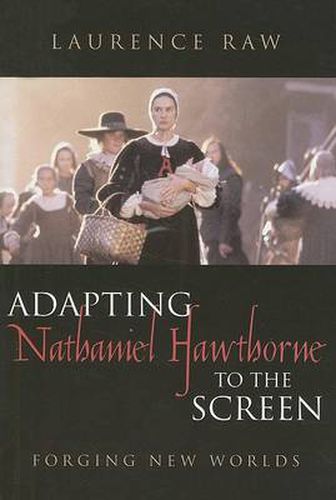Readings Newsletter
Become a Readings Member to make your shopping experience even easier.
Sign in or sign up for free!
You’re not far away from qualifying for FREE standard shipping within Australia
You’ve qualified for FREE standard shipping within Australia
The cart is loading…






Considered one of the greatest of American authors, Nathaniel Hawthorne (1804-1864) created a memorable body of literature, which included the novels The Scarlet Letter and The House of Seven Gables, as well as a wealth of short stories. In Adapting Nathaniel Hawthorne to the Screen: Forging New Worlds, Laurence Raw demonstrates how filmmakers have turned to Hawthorne to comment on the nation’s past, present, and future. Raw shows how some filmmakers have tackled the difficulty of Hawthorne’s material by treating him strictly as a writer whose work was firmly situated in American life of the mid-nineteenth century. Raw also examines how directors have used Hawthorne’s stories to comment on various aspects of twentieth century American life. This device is particularly evident in the many versions of The Scarlet Letter, such as the 1950 television version broadcast two months after Senator Joseph McCarthy’s speech about State Department employees who were card-carrying members of the Communist Party and 1960s and early 70s versions supporting countercultural values where filmmakers created characters prepared to fly in the face of conformity and search for alternative means of existence. In this volume, Raw also discusses adaptations of the short stories Feathertop,
The Snow Image,
Dr. Heidegger’s Experiment, and Rappacinni’s Daughter, as well as the novels The House of Seven Gables and The Scarlet Letter, the latter having been transformed into film no less than ten times. By surveying the canon of adaptations produced over the last eight decades, this book provides a unique insight into American social, political, and cultural history from a variety of perspectives, underlining how Hawthorne’s work has been of enduring concern to directors and audiences alike.
$9.00 standard shipping within Australia
FREE standard shipping within Australia for orders over $100.00
Express & International shipping calculated at checkout
Considered one of the greatest of American authors, Nathaniel Hawthorne (1804-1864) created a memorable body of literature, which included the novels The Scarlet Letter and The House of Seven Gables, as well as a wealth of short stories. In Adapting Nathaniel Hawthorne to the Screen: Forging New Worlds, Laurence Raw demonstrates how filmmakers have turned to Hawthorne to comment on the nation’s past, present, and future. Raw shows how some filmmakers have tackled the difficulty of Hawthorne’s material by treating him strictly as a writer whose work was firmly situated in American life of the mid-nineteenth century. Raw also examines how directors have used Hawthorne’s stories to comment on various aspects of twentieth century American life. This device is particularly evident in the many versions of The Scarlet Letter, such as the 1950 television version broadcast two months after Senator Joseph McCarthy’s speech about State Department employees who were card-carrying members of the Communist Party and 1960s and early 70s versions supporting countercultural values where filmmakers created characters prepared to fly in the face of conformity and search for alternative means of existence. In this volume, Raw also discusses adaptations of the short stories Feathertop,
The Snow Image,
Dr. Heidegger’s Experiment, and Rappacinni’s Daughter, as well as the novels The House of Seven Gables and The Scarlet Letter, the latter having been transformed into film no less than ten times. By surveying the canon of adaptations produced over the last eight decades, this book provides a unique insight into American social, political, and cultural history from a variety of perspectives, underlining how Hawthorne’s work has been of enduring concern to directors and audiences alike.